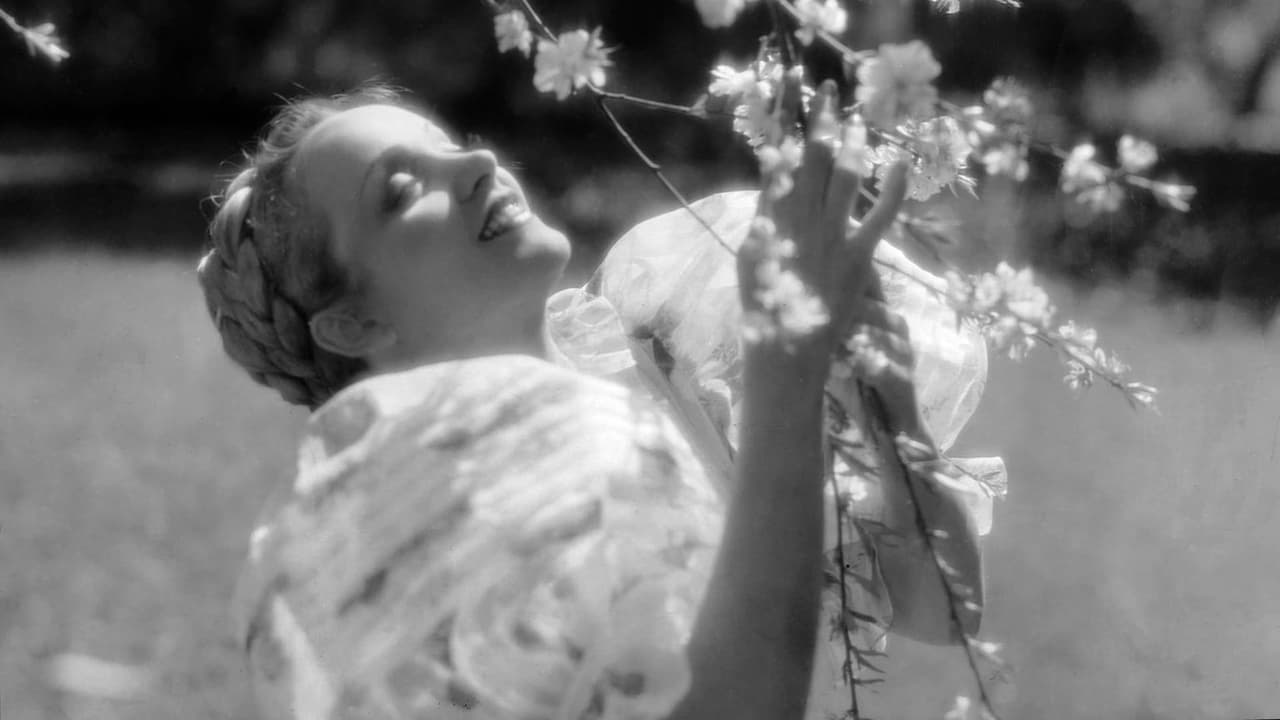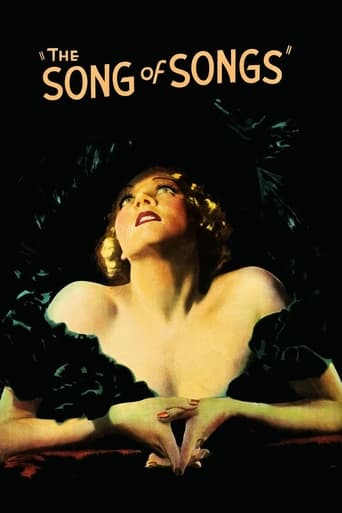AniInterview
Sorry, this movie sucks
Manthast
Absolutely amazing
WillSushyMedia
This movie was so-so. It had it's moments, but wasn't the greatest.
Tyreece Hulme
One of the best movies of the year! Incredible from the beginning to the end.
DKosty123
This film is a strange opposite of Blue Angel. In this one Dietrich is an angel, who is taken from innocent to mature by 2 men. It is a delightful reverse. An underrated film for many reasons, especially that this one did not get the proper release to theaters and television that some of her other films did.Ahern, as the sculptor manages to create a terrific statue of Dietrich and then falls in love with the real thing. Meanwhile, a plot is hatched with a German Colonel to make Dietrich a Baroness, and after she is left by Ahern, she does this to get revenge.Precode, she sells herself for money, and the nude image of her statue dominates this film. What is really outstanding, is that Dietrich thick accent is hardly noticeable in this one. She sings a very good song, and plot wise, this one works better than many of her films.Dietrich's acting is perfect, her looks are great, and her direction seems to let her bloom in this film more than most of her other films. There are plenty of good reasons to check this one out.
Antonius Block
The plot to this film is pretty simple, but wow, Marlene Dietrich is fantastic in the leading role, and director Robert Mamoulian makes the most of his actors and the script in crafting a beautiful film. Dietrich skillfully handles her role which shifts from a naïve young country girl, to a model and lover of a sculptor, to the unhappy wife of an older man, and lastly to a cabaret girl. Her performance is especially impressive for the time, when over-acting and exaggerated facial gestures were common; Dietrich by contrast is polished and smooth, sexy in a sultry, understated way, and quite a singer on top of all that. Director Robert Mamoulian, who also directed the brilliant Dr. Jekyll and Mr. Hyde in 1931, pulls all the right strings here, and there are some beautiful shots, examples of which are shifting clouds in front of the moon and sunlight reflecting off the water as Dietrich is out riding. The movie is also elevated by quotes from the poetry of the Biblical book of the Song of Songs, and it's a nice mix of sophistication and pre-Code naughtiness. The scene when Dietrich disrobes for a nude modeling session, where Mamoulian cuts to sculptures to represent her body, brings a smile. The plot itself isn't going to blow you away, but Dietrich will. Very enjoyable.
Marcin Kukuczka
"Let him kiss me with the kisses of his mouth; for your love is better than wine." Song of Songs 1:2 While in the times of laws and restrictions, Israel was granted Solomon and his poetical spirit of wisdom, in the early years of cinema, Hollywood was granted Rouben Mamoulian (1897-1987) who brought a soul to his motion pictures. At the beginning, I would like to quote his very symbolic statement that defines Mamoulian's exceptional perspective on cinema (from "Directing the Film" by Eric Sherman, 1976). The innovative director said: "...the arts are the true universal medium. The whole thing should serve to remind you that man still has a potential, that he's not just crawling on earth. He still has wings and he can fly. We need this reminder of faith, of optimism, to reestablish the dignity of a human being." When we analyze his movies, particularly the two he made in 1933 with two greatest stars of cinema, Greta Garbo and Marlene Dietrich, we realize that there is something unique in the direction, in handling of the plots, in imagery and in the whole approach. The director has a great degree of love and respect towards his female stars and allows them to go beyond themselves in every respect. While "Queen Christina" clearly appears to be a Garbo film, "The Song of Songs" appears to be a Dietrich film. Why? The whole story of THE SONG OF SONGS occurs to deal with the life journey of the main character, Lily Czepanek (Marlene Dietrich). After the death of her father, a peasant girl, Lily, leaves for Berlin where she stays at her unemotional aunt, Mrs Ramussen (Alison Skipworth) who runs a bookshop. The thing she brings to Berlin and appreciates most is the Bible, particularly its Song of Songs praising the triumph of love. Soon, there appear two men in the life of the pure dove: one is the young sculptor Richard Waldow (Brian Atherne) who leads a life of an artist; the other is the rich, materialistic, conventional and heartless Baron Von Merzbach (Lionel Atwill) who has a power transform a shy girl into a sophisticated woman. Is there anyone on earth who can love her soul? Is there anyone whose heart is warm? Does she appear to be strong enough to defend her sweetest affection? Will she memorize the beautiful rhythm of the lovers' hearts? Marlene Dietrich portrays the character with unbelievable charm, flair, a bit of eroticism. She beautifully depicts a change of heart and many sophisticated feelings, including shyness, enthusiasm, sorrow, disillusion and coldness. She is given some of the most beautiful, poetical moments in the film, including the fabulous spring sequence which appears to be like a touch of southern breeze, like a magical journey into a lost paradise, like a gentle smile of a beauty that seems to overwhelm and supply us with the glimpse of bliss. Marlene is also unforgettable with her eyes and the whole posture when Richard tells her to take her clothes off and... Another moment that is hard to skip is when she, having gone through all this experience, enters Richard's room and sees the sculpture...her face is illuminated by memories, by longing, by sorrow rooted in a loss. A key moment is also her song "Johnny, when will your birthday be" Marlene sings it memorably and wears a gorgeous costume by Travis Benton. But here, there is a need to compare...Mamoulian appears to be creative when dealing with both Greta Garbo and Marlene Dietrich. The both are given the most sensitive moments in their careers and, although the two 1933 plots have little in common, there appear to be huge similarities. Mamoulian brings out something unique from his stars' depths: all the beauty, all the talent to raise and overwhelm. While Ms Garbo hugs the pillows in the inn where she has experienced love and touches the objects to memorize the room, Ms Dietrich touches the soil and kisses the grass. While Ms Garbo is a beauty, a queen of snow, Ms Dietrich is a pleasure, a girl of spring.Other cast give more or less decent performances. Lionel Atwill nicely portrays the cold baron, who is a representation of riches and conventions that have little to do with genuine love. He lusts for the innocent dove in order to take advantage of her and, finally, deprive her of dreams and illusions. He is the one who lustfully smokes a cigar when looking at the drafts of her body, his hand trembles and his smoke is on the painting. Brian Atherne is not particularly memorable as the sculptor Richard but he also has some of his good moments. Alison Skipworth has some witty moments as the conservative heartless auntie who does not tolerate much about the youth not being a saint herself...Another merit of the film are the unique close-ups of the sculptures. The images appear to speak with grandiosity of sculptures and sweetness of love song. The symbolic moment when Lily smashes the sculpture appears to depict the change that no longer allows to turn back.All in all, I have waited to see the film for a long time and...my patience was rewarded. I highly enjoyed it as a motion picture made so sensitively and poetically by Rouben Mamoulian. Don't ask me why...Perhaps, it is because of Marlene, perhaps, it is because of its beauty expressed in many scenes, perhaps, it is because of its great message: Be alert and don't skip an awakening love. Stop for a while and cherish the miracle of blossoming trees in spring and the joy of singing birds. This is a single gift and its bliss can never come again...I dedicate this review to my friend whose name is written in my heart. It is thanks to him I have seen this unforgettable film.
hildacrane
Interesting to see Dietrich, early in her Hollywood career, working with a director other than her Pygmalion, Josef von Sternberg. The latter director provided beautiful but often-static set-ups for framing her, while Mamoulian's musicality and fluid camera release her. (Think also of his direction of Garbo in "Queen Christina," and that film's famous scene in which she moves lovingly and rhythmically--it was timed to a metronome-- around the bedroom, watched by her lover. )I think this is one of Dietrich's best performances. She passes through many phases, from naive young girl to earthy woman. Her song "Johnny" is sublime--and moving, when she angrily tears into the second chorus after spotting in the audience the lover who had abandoned and disillusioned her.

